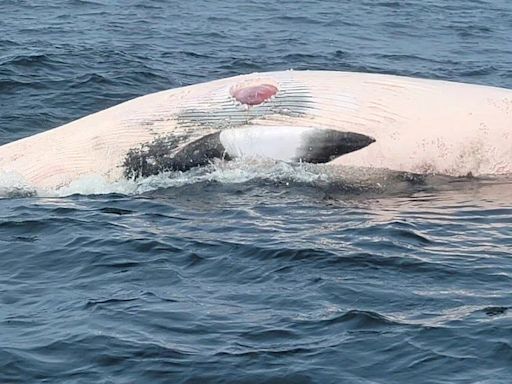Search results
Seal App is a free app that lets you download videos and images from Youtube, Facebook, Instagram, TikTok, and more. Download Seal App for Android, iOS, PC, and enjoy high-quality, offline, and customizable content.
- Overview
- Seal diversity
- GeneratedCaptionsTabForHeroSec
seal, any of 32 species of web-footed aquatic mammals that live chiefly in cold seas and whose body shape, round at the middle and tapered at the ends, is adapted to swift and graceful swimming. There are two types of seals: the earless, or true, seals (family Phocidae); and the eared seals (family Otariidae), which comprise the sea lions and fur seals. In addition to the presence of external ears, eared seals have longer flippers than do earless seals. Also, the fur of eared seals is more apparent, especially in sea lions.
Seals are carnivores, eating mainly fish, though some also consume squid, other mollusks, and crustaceans. Unlike other seals, the leopard seal (Hydrurga leptonyx) of the Antarctic feeds largely on penguins, seabirds, and other seals, in addition to fish and krill. The main predators of seals are killer whales, polar bears, leopard seals, large sharks, and human beings.
The Baikal seal (Phoca sibirica) of Lake Baikal in Siberia, Russia, is the smallest at 1.1–1.4 metres (3.6–4.6 feet) long and 50–130 kg (110–290 pounds), but some female fur seals weigh less. The largest is the male elephant seal (genus Mirounga leonina) of coastal California (including Baja California, Mexico) and South America, which can reach a length of 6.5 metres (21 feet) and a weight of 3,700 kg (8,150 pounds). The upper portions of seals’ limbs are within the body, but the long feet and digits remain, having evolved into flippers. Seals possess a thick layer of fat (blubber) below the skin, which provides insulation, acts as a food reserve, and contributes to buoyancy.
True seals of the genus Phoca are the most abundant in the Northern Hemisphere. They are fairly small, with little difference in size between the sexes. Ringed seals (P. hispida) have blotches over their entire bodies, harp seals (P. groenlandica) have a large blotch of black on otherwise mostly silver-gray fur, harbour seals (P. vitulina) have a marbled coat, and ribbon seals (P. fasciata) have dark fur with ribbons of paler fur around the neck, front limbs, and posterior part of their body.
Britannica Quiz
Animal Factoids
Though especially abundant in polar seas, seals are found throughout the world, with some species favouring the open ocean and others inhabiting coastal waters or spending time on islands, shores, or ice floes. The coastal species are generally sedentary, but the oceangoing species make extended, regular migrations. All are excellent swimmers and divers—especially the Weddell seal (Leptonychotes weddellii) of the Antarctic. Various species are able to reach depths of 150–250 metres or more and can remain underwater for 20–30 minutes, with the Weddell seal diving for up to 73 minutes and up to 600 metres. Seals cannot swim as fast as dolphins or whales but are more agile in the water. When swimming, a true seal uses its forelimbs to maneuver in the water, propelling its body forward with side-to-side strokes of its hind limbs. Because the hind flippers cannot be moved forward, these seals propel themselves on land by wriggling on their bellies or pulling themselves forward with their front limbs. Eared seals, on the other hand, rely mainly on a rowing motion of their front flippers for propulsion. Because they are able to turn their hind flippers forward, they can use all four limbs when moving on land.
All seals must come ashore once a year to breed. Nearly all are gregarious, at least when breeding, with some assembling in enormous herds on beaches or floating ice. Most form pairs during the breeding season, but in some species, such as fur seals, the gray seal (Halichoerus grypus), and elephant seals, males (bulls) take possession of harems of cows and drive rival bulls away from their territory. Gestation periods average about 11 months, including a delayed implantation of the fertilized egg in many species. Cows are again impregnated soon after giving birth. Pups are born on the open ice or in a snow lair on the ice. The mother remains out of the water and does not feed while nursing the pups. The young gain weight rapidly, for the cow’s milk is up to about 50 percent fat.
Learn about seal, any of 32 species of web-footed aquatic mammals that live in cold seas and have different types of ears and flippers. Find out how seals are adapted to swimming, diving, breeding, and facing predators and human threats.
- The Editors of Encyclopaedia Britannica
Background information. Birth name. Seal Henry Olusegun Olumide Adeola Samuel. Also known as. Sealhenry Samuel [1] [2] Born. 19 February 1963 (age 61) Paddington, London, England. Genres. Soul. folk. pop. dance. rock [2] Occupation (s) Musician.
Learn about the 33 species of seals, also known as pinnipeds, that live on every continent except Antarctica. Find out how they adapt to different habitats, what they eat, and how they are affected by climate change and human activities.
- 12 min
People also ask
Are seals earless or eared?
What is seal app?
What is the smallest seal in the world?
Where do seals live?
The official YouTube channel of Seal. Subscribe for the latest music videos, webisodes, live performances, and more. Seal is a British musician, singer, and songwriter.
Learn about the anatomy, behavior, and evolution of pinnipeds, the marine mammals that are flippered and charismatic. Discover how they swim, dive, sleep, and adapt to different habitats and climates.
Learn about seals, their habitats, threats and conservation efforts by WWF. Find out how to adopt a seal, join actions and see photos and videos of seal species.


